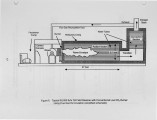| OCR Text |
Show Development and Demonstration of the Radiation Stabilized Burner for Boilers and Process Heaters ABSTRACT John D. Sullivan and Andrew W. Webb Alzeta Corporation 2343 Calle Del Mundo Santa Clara, CA 95054 Presentation at the 1996 AFRC International Symposium September 30 - October 2, 1996 Hyatt Regency Baltimore Baltimore, Maryland Alzeta has improved the performance of the Pyromat eSB burner, originally developed as a 30 ppm NOx burner for oil field steamers, by combining downstream fuel injection with lean premixed first-stage combustion. This advanced Radiation Stabilized Burner is the first industrial surface combustion burner to use fuel staging to lower pollutant emissions. By creating a secondary flame envelope around the lean, premixed primary burner, Alzeta has achieved NOx emissions of 10-20 ppm and CO emissions below 50 ppm while operating at 30/0 stack oxygen in a 50,000 Ib/hr oil field steamer. Initial development of the Radiation Stabilized Burner was completed in a 3 MMBtu/hr water tube boiler where the effect of secondary fuel injection on NOx emissions was experimentally determined. Parameters such as fuel flow rate, injection angle, and velocity were optimized to achieve NOx and CO emissions below 9 ppm at low stack oxygen levels. The burner was then scaled up for the first industrial-scale test in an oil field steamer. 1. INTRODUCTION The Radiation-Stabilized Burner (RSB), commercialized under the name Pyromat eSB, is a premixed, semi-radiant, natural gas-fired burner that uses a patented technique to form radiant and blue-flame zones adjacent to each other on a cylindrical porous surface metal mat. The burner offers surface heat release rates that are up to ten times higher than traditional radiant burners. The development of the RSB has dramatically reduced the size and cost of porous surface burners while maintaining the benefits of controlled flame shape and low emissions of NOx and CO. Figure 1 is a photograph of a 60 MMBtu/hr Pyromat CSB. 1 |























